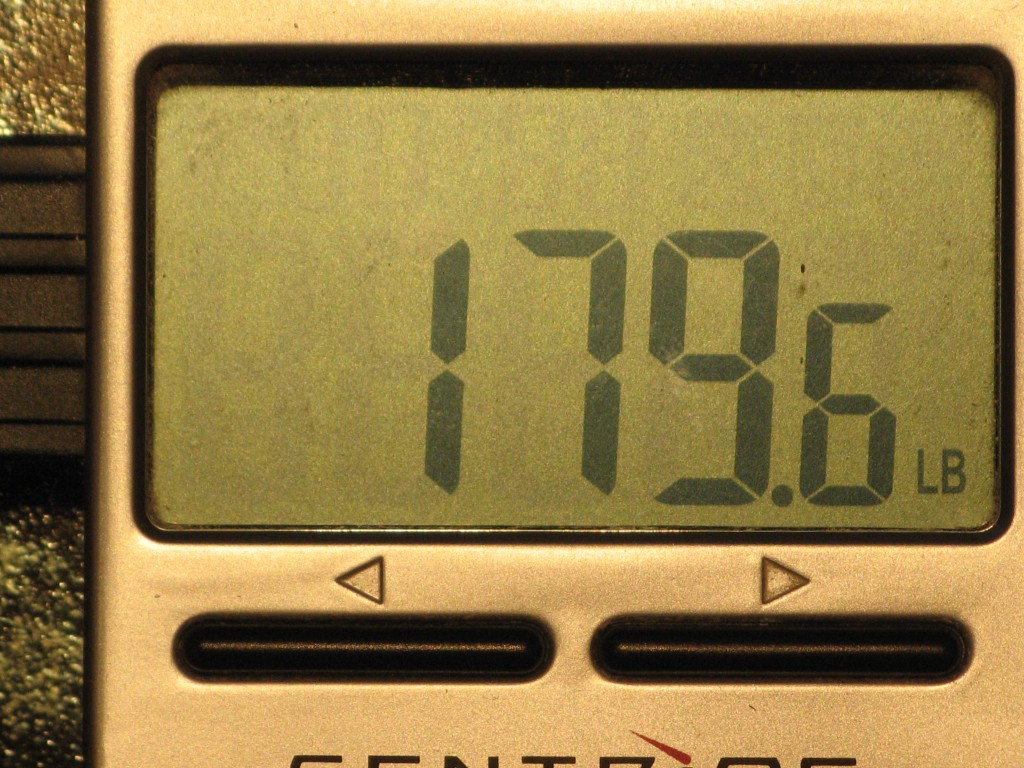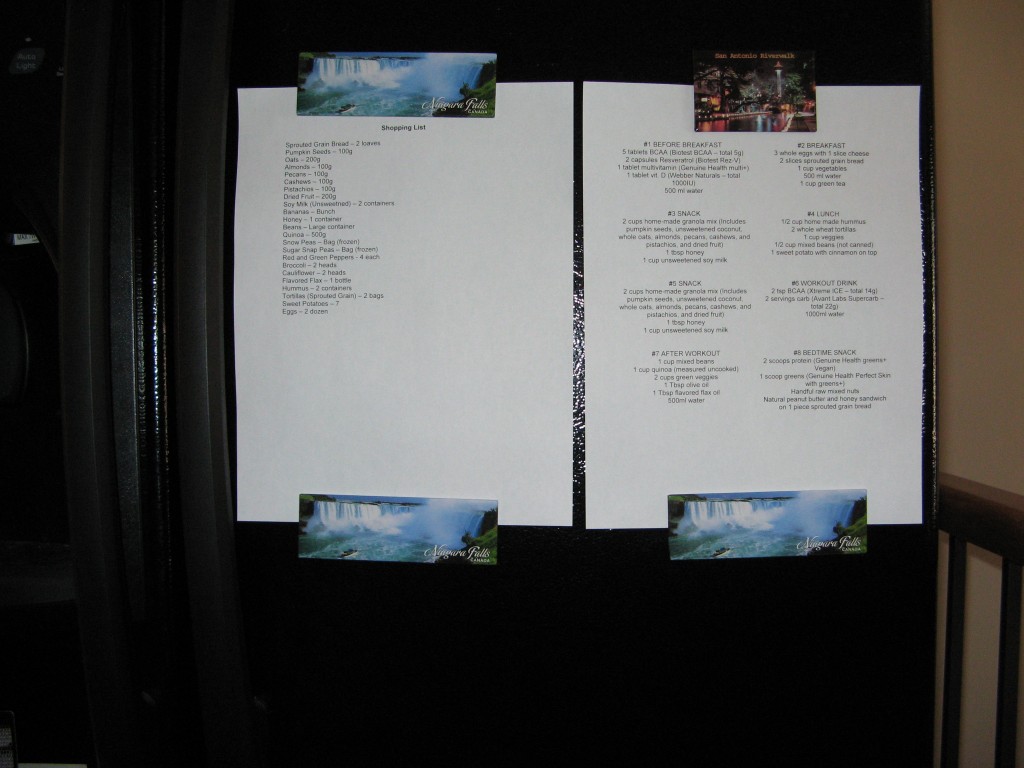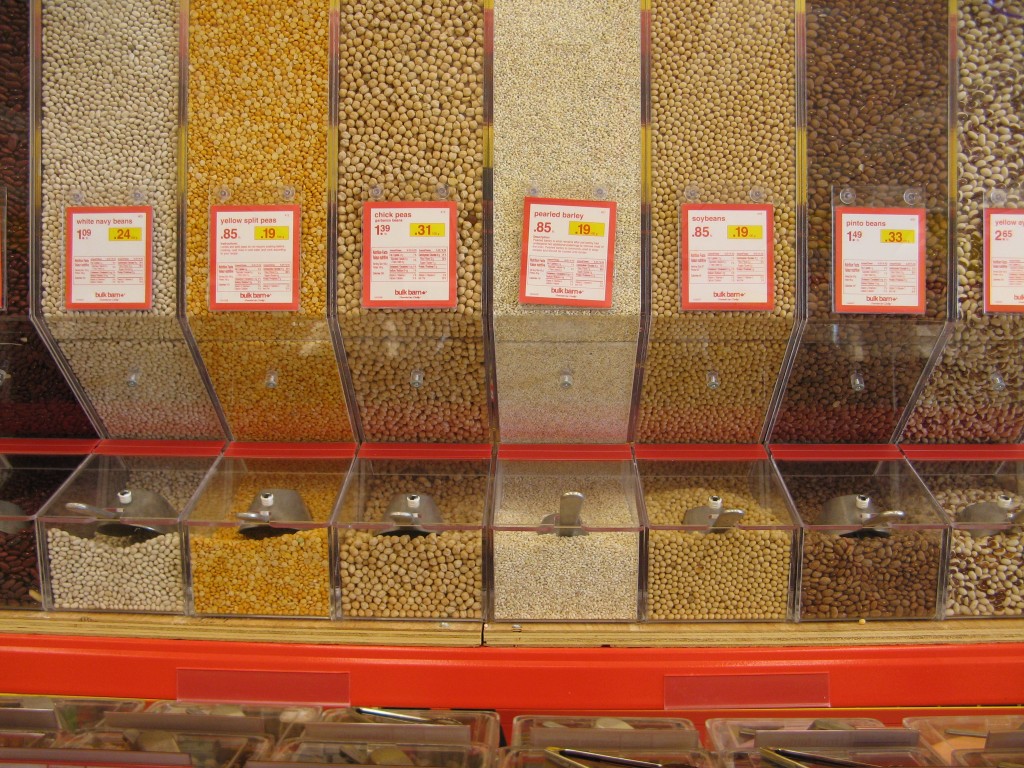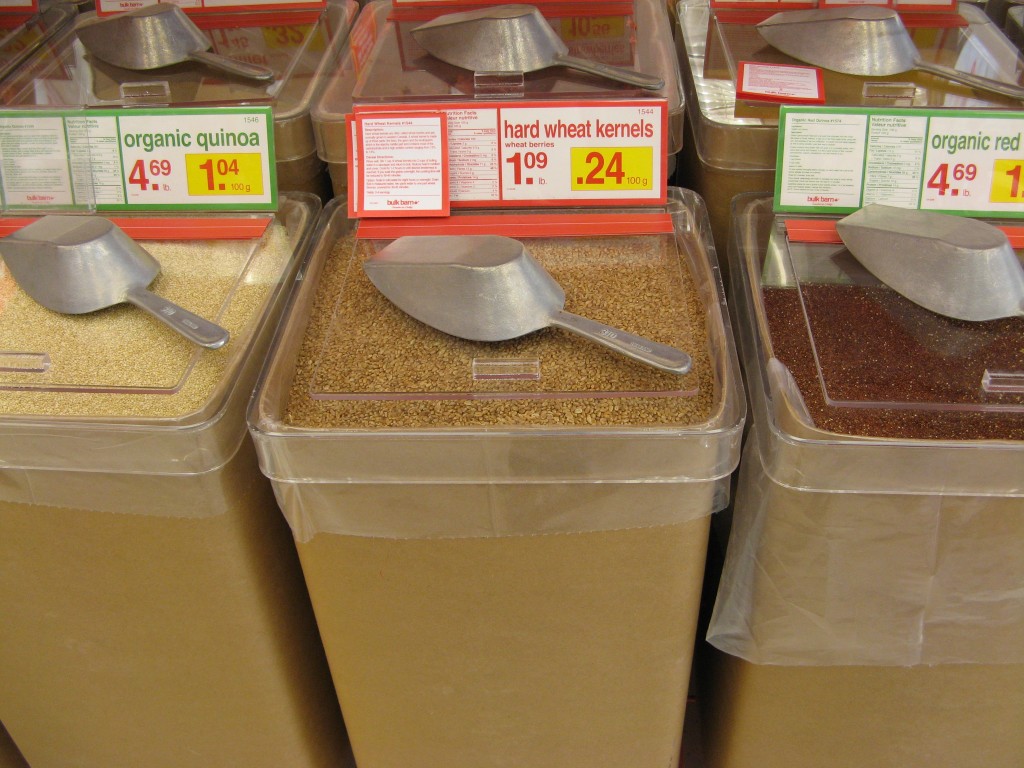By some strange, twisted set of circumstances, John Berardi finds himself trying to build muscle while following a strict plant-based diet. Some say this is impossible. Enter Dr. Berardi…
++
Plant-based muscle building?
A few weeks back, my good buddy Damian was in town and we were at the gym in the middle of a back workout. In between sets, another friend, Nate, came up to say hi. And with him was his new training partner, a thin-ish guy in his mid 20’s, named Lou.
After introducing himself, Lou told me that he was new to the gym but was struggling with building muscle because he’s a vegetarian. Knowing nutrition is my game, he asked the inevitable question – “what can a vegetarian do to build muscle?”
Not missing a beat, my friend Damian responded with: “eat meat.”
Now, we all had a good laugh at that. But clearly that response wasn’t solving any of Lou’s muscle-building problems. No, Lou needed some strategies for getting enough calories, enough protein, and enough vitamins and minerals — without including meat in his diet. That’s a challenge for any plant-based eater, regardless of their goals, let alone someone wanting to build muscle. So Lou and I scheduled a time to sit down and plan out a plant-based muscle building diet for him.
When Lou and I met up, I brought with me a copy of Precision Nutrition V3. Why? Well, since this latest version of PN actually has a brand-new guidebook called “The Plant-Based Diet Guide,” I figured he’d benefit from reading all about how to optimize his nutrition – even while avoiding meat.
 He did. And at the end of our meeting, Lou had in front of him, an awesome meat-free muscle building plan.
He did. And at the end of our meeting, Lou had in front of him, an awesome meat-free muscle building plan.
Funny enough, after my meeting with Lou, I told a few friends about the plan. Needless to say, the carnivores among them were skeptical. One of them commented: “vegetarian bodybuilding is stupid.” The other one told me, and I quote, “it’s impossible to build muscle without eating meat.”
Impossible? That sounds an awful lot like a challenge to me!
You see, I’m a tireless experimenter with my body. I’m always trying new things that could help in my quest to look better, feel better, and improve my health. So this little push, along with the fact that Lou’s diet was one that I could actually see myself enjoying, was all I needed to put the PN Plant-Based Diet Guide to the test.
And what a test. You see, the fact that a smart, well-designed PN-style plant-based eating plan can help folks improve their health and drop some unwanted body fat is a no brainer. However, using such a diet to build muscle while staying lean. Now that’s a PN-sized challenge. A challenge that I kicked off on Monday. A challenge that I’ll be exploring for the next 30 days or so. A challenge that I’ll report on right here in the PN Blog.
What’s a plant-based diet?
Taken directly from pages 1-3 of the PN Plant-Based Diet Guide; plant-based diets are basically vegetarian meal plans. So why not use the term “vegetarian diets”? Well, the concept of “vegetarianism” has taken on a life of its own and implies certain moral and/or philosophical decisions that not every person trying to eat more plants and less meat believes in. Including myself.
Simply put, not every person avoiding meat has a deep philosophical reason for doing so. Some believe avoiding meat is simply healthier. Others believe it’s better for the environment. And, of course, still others make this choice as a result of religious or animal rights belief. It’s for these reasons I call it a plant-based diet and not vegetarianism. The term “plant-based diet” doesn’t carry all the biases and prejudices that “vegetarianism” does.
It simply means eating more plants and less meat. It’s a diet thing.
More importantly, in using “plant-based diet”, I’m calling vegetarianism what it should have always been called. In other words, a proper vegetarian meal plan is based on eating mostly/only foods that come from plants. Not meat-free processed junk foods, which is something many vegetarians do.
Of course, there are several types of plant-based diets. Some plant-based eaters do still eat meat; they just eat much less than average. Other plant-based eaters avoid meat; however do eat fish, dairy products, and eggs. Other plant-based eaters avoid all meat and fish; eating only dairy and eggs from animals. And finally, vegans eat only foods from the plant kingdom, avoiding all animal products, including dairy and/or eggs.
What Kind of Plant-Based Eater Am I Pretending To Be?
In this month’s experiment, I’m actually going to be following a plan that’s as close to vegan (no animal products at all) as possible. What can I say? I like a challenge.
However, I do love eggs. So I’ll be eating 3 whole eggs each morning with 1 slice of cheese on top. That’s the only animal based food I’ll be including in my plan. Technically that makes me a lacto-ovo plant-based eater. But I could care less about the labeling here.
As you may have guessed by now, I’m not about to sign up for omnivore’s anonymous and repent my meat-eating ways. Nor is this experiment designed to say anything about the nutritional superiority of a smart plant-based diet vs a smart mixed diet. Nor am I making any moral, environmental, or animal-rights statements here. Rather, this is a personal experiment I’m doing to “see what happens.” I really want to know what’ll happen if I drop the meat and eat mostly plants while trying to gain muscle.
Step 1: The metrics for muscle
Of course, the best way to see what happens with a training or nutrition intervention is to bust out the Precision Nutrition Measurement Guide and start measuring stuff. So that’s exactly what I did.
I started on page 1, planned out which measures I’d collect, and on Monday morning, I collected ’em. First, I weighed in. Next I had a skinfold analysis done, recording both my skinfolds and my total body fat percentage, next, I measured the girths of key body parts, and finally, I took some before pictures.
After plugging all my numbers into the Precision Nutrition Results Tracker, here’s how it all turned out.
Body weight

Skinfolds
Chest – 4mm
Triceps – 2mm
Axillary – 4mm
Subscapular – 6mm
Abdominal – 9mm
Suprailiac – 3mm
Thigh – 4mm
Total Body Fat – 5.5%
Total Fat Mass – 9.9lbs
Total Lean Mass – 170.1lbs

Girths
Neck – 15in
Shoulders – 49in
Chest – 37.7in
Arm – 14.2in
Waist – 33in
Hip – 36.7in
Thigh – 22in
Calf – 14.5in
Now, I should note that I’ve been in maintenance mode for about 2 years. In other words, I haven’t really been actively trying to gain or lose weight. Being pretty happy with where I’m at, I’ve simply focused on eating for maintenance. And I’ve pretty well succeeded at that. I know this because my PN Results Tracker tells me so. Notice that the 2nd to last measure (taken October of 06) and the last measure (taken on Monday) are pretty identical, plus or minus about a pound.
What this means is that it’s a pretty good time to try a new intervention. I’ve been weight stable on my current diet for 2 years. So if my training remains the same, the new eating program will clearly be responsible for any changes that take place over the next month or so.
Step 2: The menu for muscle
After coming up with Lou’s menu, I thought to myself, wow, this looks like it’d be a tasty way to eat. So I decided to follow pretty much what I recommended to him for muscle gain. Because that’s my goal. I’d like to see if I can gain about 10-12lbs of body weight with at least 7-10lbs of that weight being lean mass.
Now, that might not be possible in 1 month. So, if things go in the right direction, I may keep at it to see how long it takes me to accomplish my goal. On the other hand, if things go horribly awry, I’ll make some changes. After all, how “horribly awry” can something go if I’m measuring my weight and body fat every two weeks or so.
In the Precision Nutrition System, we call this process outcome-based decision making. We measure every few weeks and from these measures (the outcomes) we customize our strategy. And it works like a charm.
So, for now, here’s where the menu began on Monday morning:
| Before Breakfast 5 tablets BCAA (Biotest – 5g total) 2 capsules Resveratrol (Biotest) 1 multi-vitamin (Genuine Health) 1 tablet vitamin D (Webber Naturals – 1000IU total) 1 serving sublingual B-12 500 ml water |
Breakfast 3 whole eggs with 1 slice cheese 2 slices sprouted grain bread 1 cup vegetables 500 ml water 1 cup green tea |
| Snack #1 2 cups home-made granola (mix includes pumpkin seeds, unsweetened coconut, whole oats, almonds, pecans, cashews, pistachios, and dried fruit) 1 tbsp honey 1 cup unsweetened soy milk |
Lunch 1/2 cup home-made hummus 2 whole wheat tortillas 1 cup veggies 1/2 cup mixed beans (not canned) 1 sweet potato with cinnamon on top |
| Snack #2 2 cups home-made granola (mix includes pumpkin seeds, unsweetened coconut, whole oats, almonds, pecans, cashews, pistachios, and dried fruit) 1 tbsp honey 1 cup unsweetened soy milk |
Workout Drink 2 tsp BCAA (Xtreme Formulations – 14g total) 2 servings carbohydrate (Avant Labs – 22g total) 1000ml water |
| After Workout 1 cup mixed beans 1 cup quinoa (measured uncooked) 2 cups green veggies 2 cloves garlic 1 tbsp olive oil 1 tbsp flavored flax oil 1 tbsp curry powder 1 multi-vitamin (Genuine Health) 1 tablet vitamin D (Webber Naturals – 1000IU total) |
Bedtime Snack 2 scoops protein (Genuine Health Vegan) 1 scoop greens (Genuine Health Perfect Skin) Handful raw nuts 1 natural peanut butter and honey sandwich on 1 slice sprouted grain bread |
Now, for those of you who already have a copy of Precision Nutrition, you may be wondering how this type of menu fits in with the PN Habits. Well, it fits in perfectly – if you look to the PN Individualization Guide. Digging around in there you’ll find some dietary customization strategies based on your body type, activity levels, etc. And since my natural body type is that of an ectomorph and I have a fairly high volume of training (about 6-7 hours per week), according to pages 4-12 of the Individualization Guide, I’m the perfect candidate for a higher calorie, higher carbohydrate intake.
(Remember, if you’re new to PN and healthy eating in general, your best bet is to start out basic with the PN Habits. In many ways this means beginning with a set of one-size-fits-all recommendations. However, once you’ve developed better eating strategies and start to get into much better shape, you can then move on to PN Indvidualization as described above. For more on this, check out the PN System.)
Now, nutrition theory aside, perhaps you’re wondering how things are actually going. Well, as of today, I’m two full days in and I’m enjoying the meals. However, I will say this. It’s a lot of food! I’m pretty much full all the time. And, of course, because of the bump in fiber, let’s just say that my GI tract is still adjusting. It’s for this reason I’ll be heading to my local health food store to pick up a good digestive enzyme to help me along. And when I hit the store, I’m also going to pick up an algae-based DHA supplement to ensure that I’m getting a good amount of omega-3 fats. Sure, the flax oil is good. But flax is inefficient. My best bet is to go with the DHA itself.
Step 3: Posting my menu and grocery list
Being that this is a pretty new style of eating for me, I decided to print up my new eating plan and post it on the fridge, right next to my weekly grocery list. Eventually, I probably will build a little more flexibility in my shopping and my day to day meals. However, since it’s all new to me right now and I’m just finding my way, for the first few weeks I’ll definitely follow along with my pre-printed plan.
You know, it’s hard enough organizing everything else in my life, let alone trying to make nutrition decisions on the fly when starting out on a nutrition program that’s brand new to me. So I’m going to stick to a plan for now. Hopefully this will prevent me from screwing myself up too badly in the initial stages of my plant-based diet.

Step 4: Going shopping
With grocery list in hand, my first stop was at a local store called the Bulk Barn.
The Bulk Barn is a really cool store that’s owned by the same company that owns Loblaws, No Frills, The Great Canadian Superstore, and a host of other regional and national grocery chains in Canada. The specialty of the Bulk Barn is, as you may have guessed, good quality bulk food. So, it’s at the Bulk Barn that I usually pick up things like dry beans, peanut butter, mixed nuts, whole grains (like quinoa), and more.
Check out some of the goods you can get at the Bulk Barn, including mixed beans, quinoa and other whole grains, and even natural peanut butter.x



With the bulk barn under my belt, I then visited the Great Canadian Superstore for my veggies, whole grain breads and wraps, unsweetened soy milk, honey, and more. Check out my bounty below:

Step 5: Preparation and eating
The last step, of course, was doing the food prep and then the eating. With all my groceries at home, I did two things right off the bat. First, I mixed up my granola and ate a big yummy bowl.

Next, I started soaking the dry beans. By soaking beans for about 12 hours with a little baking soda mixed in, you can actually reduce the, ahem, gaseous effects of those little buggers. Also, this strategy helps to remove some of the anti-nutrients present in beans. So, that’s the second thing I did. I started soaking. Then I went about my business.
About 12 hours later, I boiled two large pots of the pre-soaked legumes. One pot contained a mixture of navy beans, kidney beans, and garbanzo beans, along with red and green lentils. The other contained garbanzo beans only. When prepping the beans, I also pre-chopped some green peppers, red peppers, broccoli, cauliflower, snow peas, and sugar snap peas for the week. This way I can’t use chopping as an excuse for missing a meal.
When complete, here’s what I ended up with; fresh, clean, and preservative free.


The mixed beans were then stored in the fridge and the garbanzo beans were then turned into home made hummus and placed, with my pre-chopped veggies, on the wraps.
Note: for more on bean prep as well as making home-made hummus, check out Gourmet Nutrition, which comes as a bonus when you order the Precision Nutrition System.
Stay tuned
As mentioned above, I’m now two days into my plan and things are going well. I’m actually enjoying my new diet so far, my training feels just fine, and it’s been fun learning about this new style of eating, first hand. So it’s time to wrap up this blog for today.
Over the next few weeks, I’ll be keeping you updated on how I’m looking, how I’m feeling, and how my body is changing with pics, girths, and skin folds. Of course, I’m expecting only good things from this plan. I designed it specifically for my body type and to support my training habits and my goals. In addition, on paper, it seems to meet and exceed all of my nutritional requirements for preventing deficiency as well as for optimal health.
Plus, if he does a good job with his eating and training, I’ll keep you up to speed on Lou’s progress too. He’s about 30lbs less than me but is following essentially the same plan, corrected for his body weight. So this little experiment might just have an n of 2.
And keep this in mind. Whether you’re a plant-based dieter or not, whether you’re trying to gain weight or lose it, the same exact strategies of planning, measurement, nutrition plan generation, food preparation, and outcome based decision making can work for you. Simply follow the steps above. And if you’re looking for more guidance, check out Precision Nutrition V3.
Eat, move, and live… better.©
The health and fitness world can sometimes be a confusing place. But it doesn’t have to be.
Let us help you make sense of it all with this free special report.
In it you’ll learn the best eating, exercise, and lifestyle strategies — unique and personal — for you.






Share